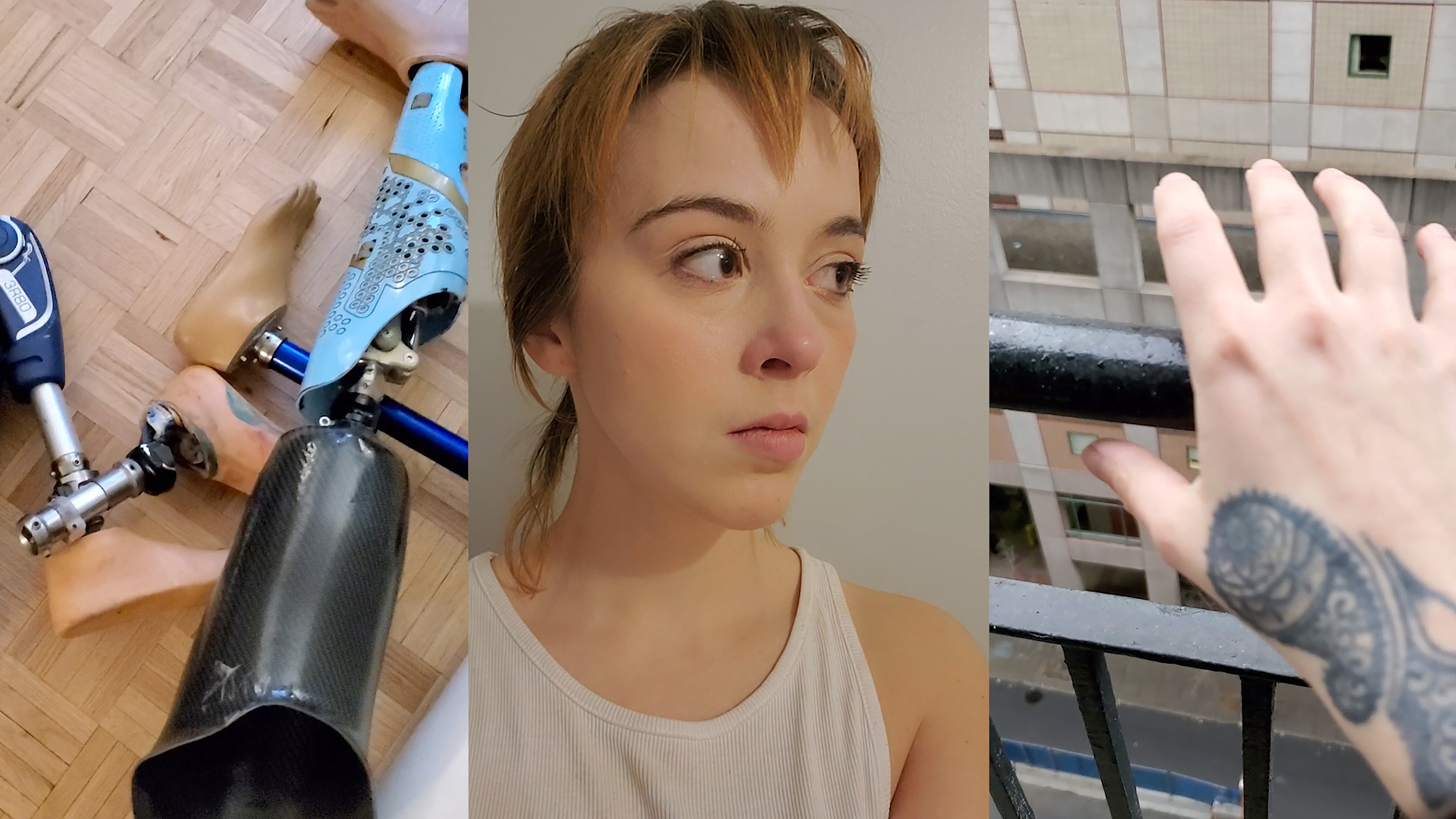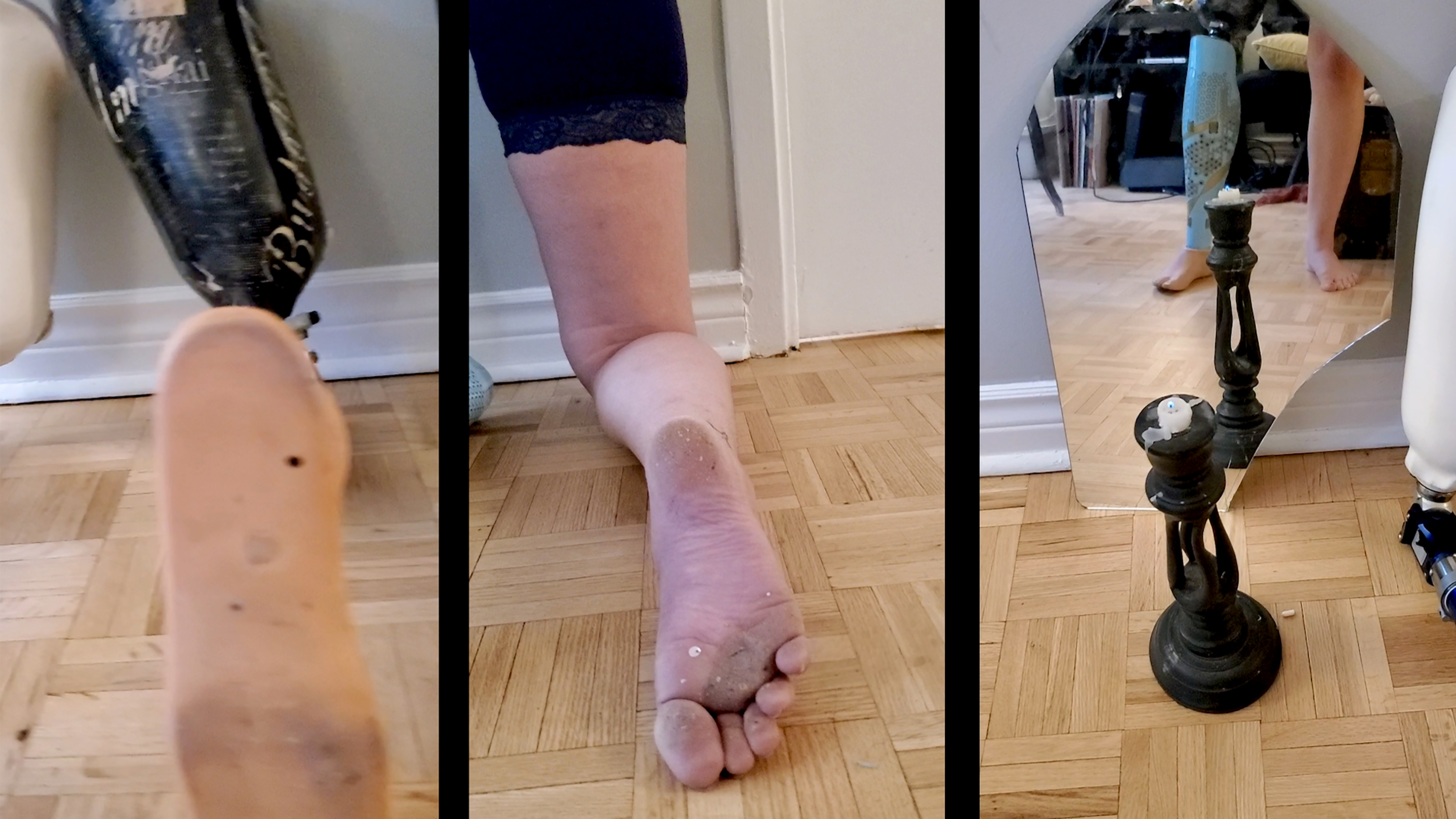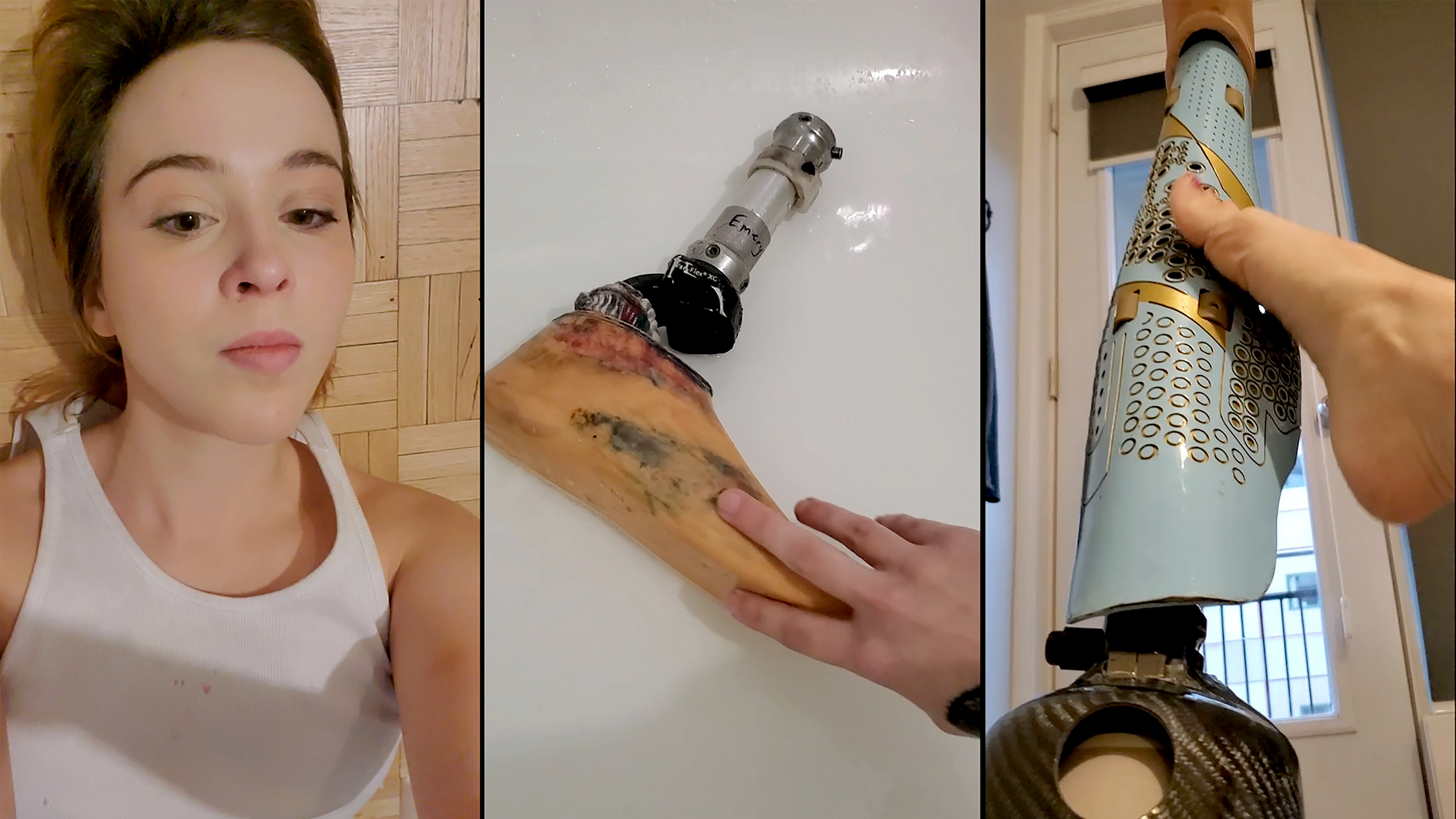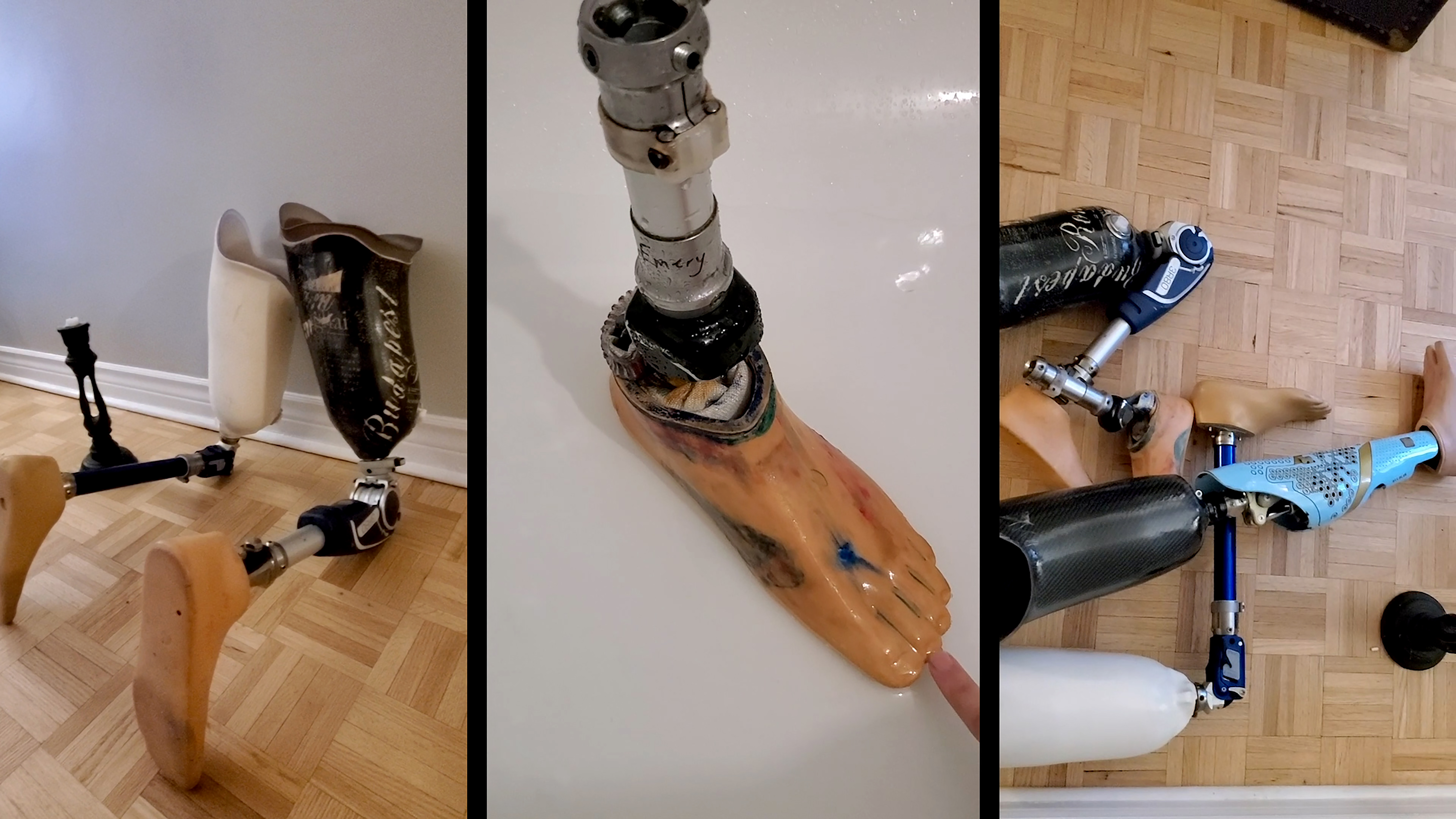Corporeal Objects: Inanimate//Animated
Emery Vanderburgh
Corporeal Objects: Inanimate//Animated, 2020
Video, 1920x1080px
Intermedia, Concordia University
What does a pile of legs look like? The interactions between a disabled person and the physical representation of their disability is the subject of Emery Vanderburgh’s video, Corporeal Objects. Vanderburgh’s response to the exclusion of disability from popular culture, often only used to supplement other components of one’s identity, asks viewers to reconsider their notions of what is “natural” to the human body. The prosthetic leg, which Vanderburgh considers a component of her own body, is mechanical and foreign. By scratching and feeling both her skin and the prosthetic, she emphasizes that what is most essential to our bodies may indeed be automatonic. She draws attention to the prosthetic leg’s dissonance with her skin, disorienting the viewer while remaining fluid. This discomfort calls into question our larger challenge of acceptance, presenting a discussion about disability and the undeniable presence of ableism in our society.
Disability is often only considered as an addendum to other parts of a
person’s identity, but is never discussed openly as its own concept.
Further, one’s ability to deal with disability is also influenced by one’s
other identities, with wealth in particular playing a major role in
obtaining prosthetic technology. When a person is recognized as disabled
within our society, their bodies are commonly associated with tragedy and
disfiguration. Rather, Vanderburgh argues, these bodies are signs of
innovation, recovery, and resilience. The video offers an appreciation of
the ‘cyberbody’ and the potential of transhumanism that goes beyond
binaries, disability existing on a spectrum just as naturally as any other
source of identity.



